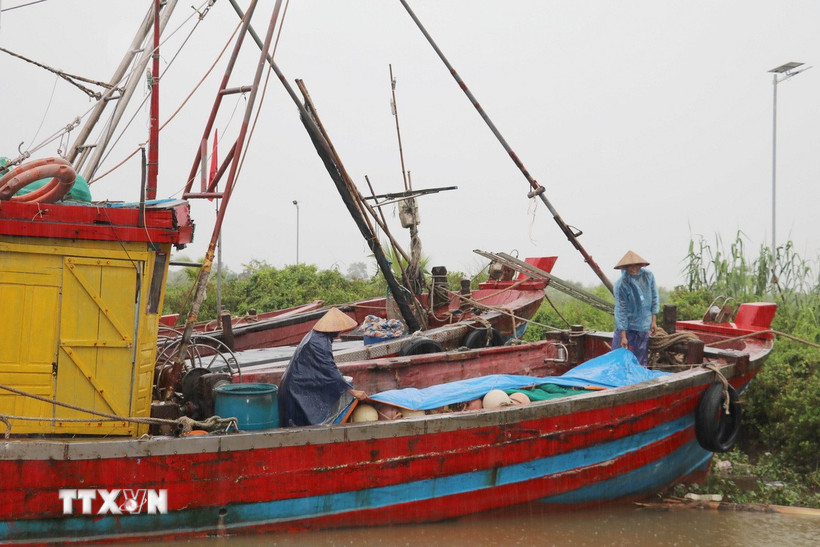HCMC – Super Typhoon Ragasa, which has weakened after making landfall in southern China, is forecast to strike Quang Ninh and Haiphong around noon on September 25 with sustained winds at level 9 and gusts reaching level 11, according to the National Center for Hydro-Meteorological Forecasting.
At 4 a.m. today, September 24, the storm’s center was located over the northern waters of the East Sea, about 650 kilometers east of Mong Cai, Quang Ninh.
Meteorological authorities have issued a level-3 disaster risk warning for the northeastern region.
Ragasa was still packing winds of level 15–16 with gusts exceeding level 17, with rain and strong winds expected to begin affecting northern Vietnam tonight.
The storm is expected to move west-northwest at a fast pace of 20–25 kilometers per hour during the day and night of September 24, while entering a rapid weakening phase.
By early tomorrow morning, September 25, its center will be near China’s Guangxi Province, about 150 kilometers east of Mong Cai, with winds forecast to ease to level 11 and gusts to level 13 due to land friction and cold air.
After making landfall, Ragasa will continue to track westward, downgrading to a tropical depression over Hanoi and Phu Tho before further weakening into a low-pressure zone.
By 4 a.m. on September 26, the storm’s center is forecast to be over northwestern Vietnam with winds below level 6.
The National Committee for Civil Defense noted that while Ragasa may not bring excessive rainfall, the danger lies in the fact that many reservoirs in northern Vietnam are already near full capacity at the end of the accumulation season. Large reservoirs such as Thac Ba, Son La, Hoa Binh, and Tuyen Quang are already close to their normal water levels, posing high risks in case of flooding.
In addition, coastal areas in Quang Ninh Province are expected to experience storm surges of 0.4–0.6 meters. Strong winds, rising seawater, and high waves could trigger coastal erosion, damage embankments, aquaculture farms, and anchored vessels.
The National Center for Hydro-Meteorological Forecasting also warned that the storm, in combination with cold air, could unleash dangerous thunderstorms and whirlwinds on September 25–26, which cannot be accurately predicted.
Authorities stressed that ensuring absolute safety for tourists is vital, and no visitors should be allowed to stay on boats during severe weather.









